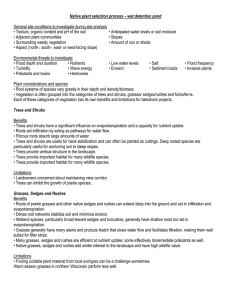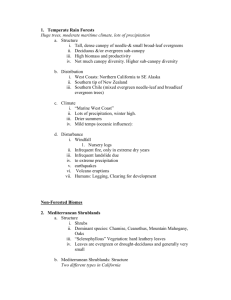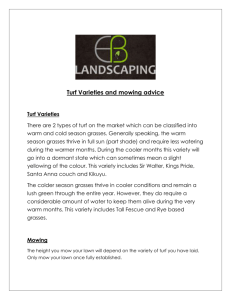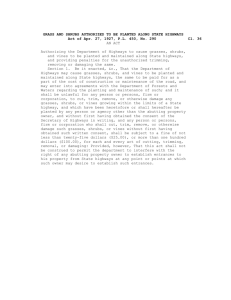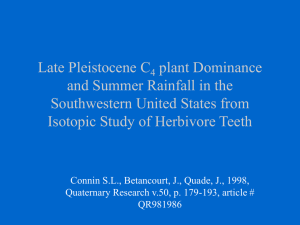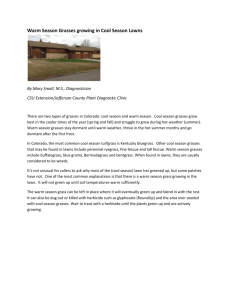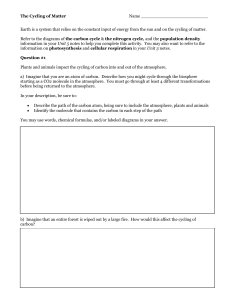Forage Values of Range Plants Noteguide
advertisement
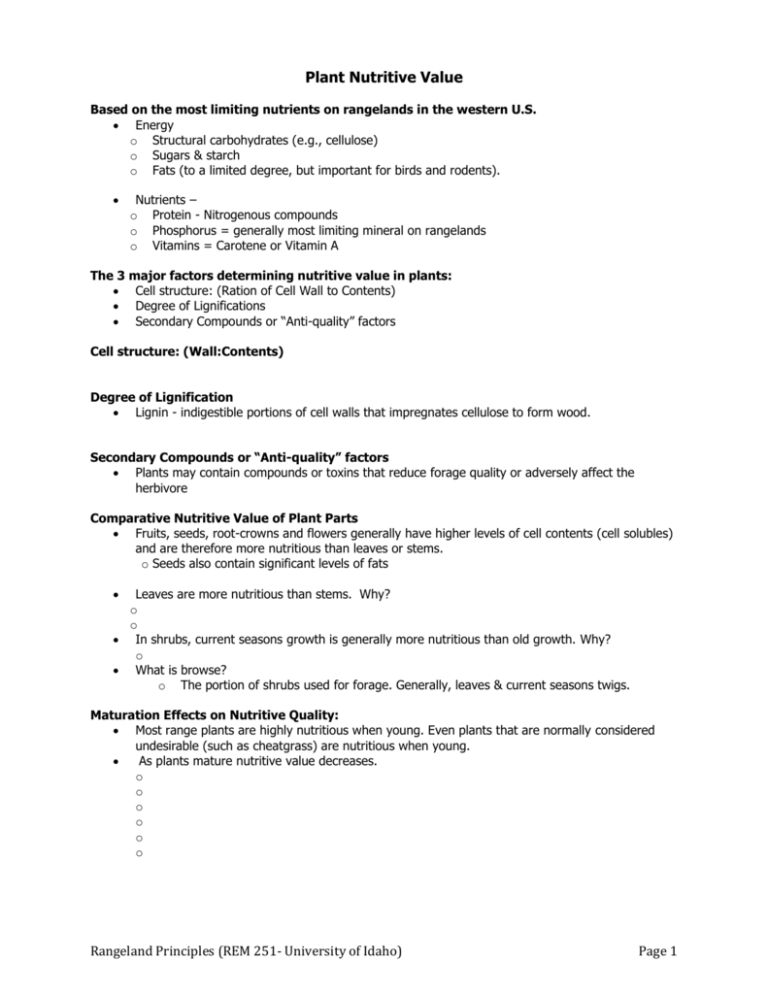
Plant Nutritive Value Based on the most limiting nutrients on rangelands in the western U.S. Energy o Structural carbohydrates (e.g., cellulose) o Sugars & starch o Fats (to a limited degree, but important for birds and rodents). The 3 Nutrients – o Protein - Nitrogenous compounds o Phosphorus = generally most limiting mineral on rangelands o Vitamins = Carotene or Vitamin A major factors determining nutritive value in plants: Cell structure: (Ration of Cell Wall to Contents) Degree of Lignifications Secondary Compounds or “Anti-quality” factors Cell structure: (Wall:Contents) Degree of Lignification Lignin - indigestible portions of cell walls that impregnates cellulose to form wood. Secondary Compounds or “Anti-quality” factors Plants may contain compounds or toxins that reduce forage quality or adversely affect the herbivore Comparative Nutritive Value of Plant Parts Fruits, seeds, root-crowns and flowers generally have higher levels of cell contents (cell solubles) and are therefore more nutritious than leaves or stems. o Seeds also contain significant levels of fats Leaves are more nutritious than stems. Why? o More cell contents o Less structural CHO's In shrubs, current seasons growth is generally more nutritious than old growth. Why? o A What is browse? o The portion of shrubs used for forage. Generally, leaves & current seasons twigs. stem age they become LIGNIFIED Maturation Effects on Nutritive Quality: Most range plants are highly nutritious when young. Even plants that are normally considered undesirable (such as cheatgrass) are nutritious when young. As plants mature nutritive value decreases. o Increased structural CHO's o Lignification o Increasing Stem:Leaf Ratio o Leaching of nutrients by rain in dormancy. o Leaching is when rain washes soluble nutrients out of the plant into the soil. Plants that o resist leaching due to dry climate, morphology, or range site are said to "cure" well. Rangeland Principles (REM 251- University of Idaho) Page 1 Comparative Nutritive Value of Grasses, Forbs, and Shrubs During growing season - forbs are more nutritious than grasses (which are more nutritious than shrubs). This is because the cell wall of grasses is thicker than the cell wall of forbs. During dormant season - browse are important for nutrients. C3 (Cool Season) vs C4 (Warm Season) Grasses Comparative Nutritive Levels of Grasses, Forbs, and Shrubs During growing season - grasses, forbs, and shrubs all provide good amounts of energy During dormant season - grasses provide a stable source of energy. Anti-quality Agents: Most common in shrubs and forbs. Rarely a problem in grasses Inhibitors - may cause illness but also inhibit digestion o React with dietary proteins to form complexes resistant to microbial degradation. o Inhibit digestion inhibiting microbial growth. Toxins - cause illness or death (i.e., alkaloids) Recap: Forbs are important sources of protein and carotene during the growing season. Shrubs are important to maintain phosphorus and protein levels in winter (dormant season). Grasses are important sources of energy (structural CHO's) throughout the year. Forbs and shrubs may contain anti-quality agents which decrease their nutritive value. Rangeland Principles (REM 251- University of Idaho) Page 2
